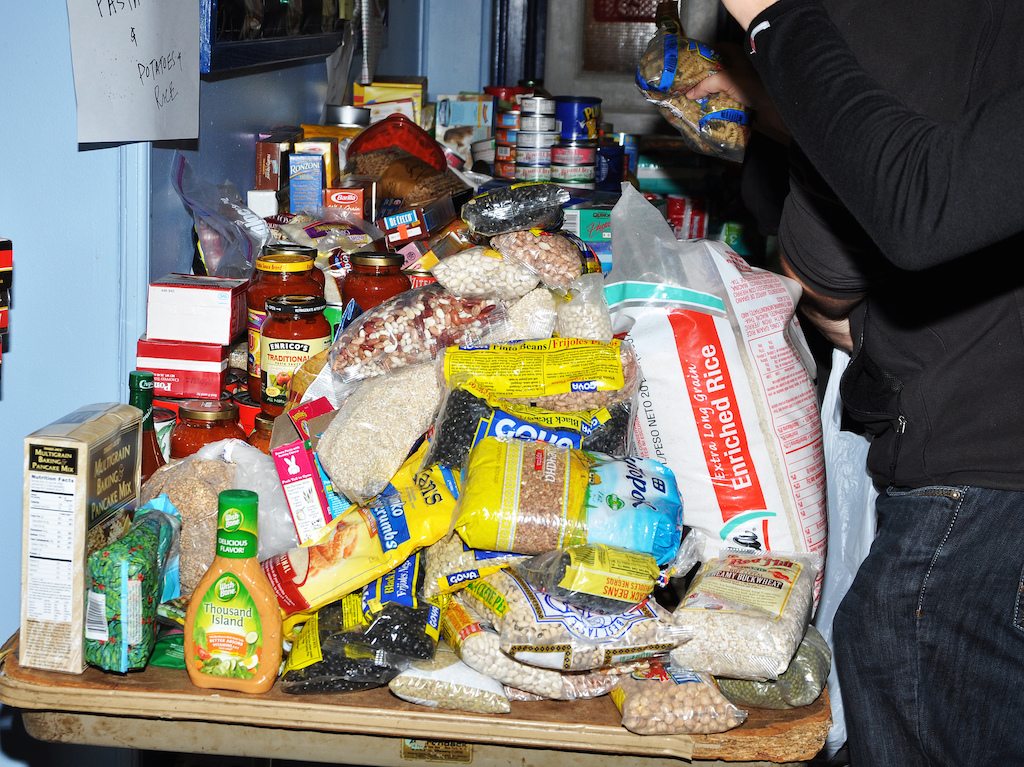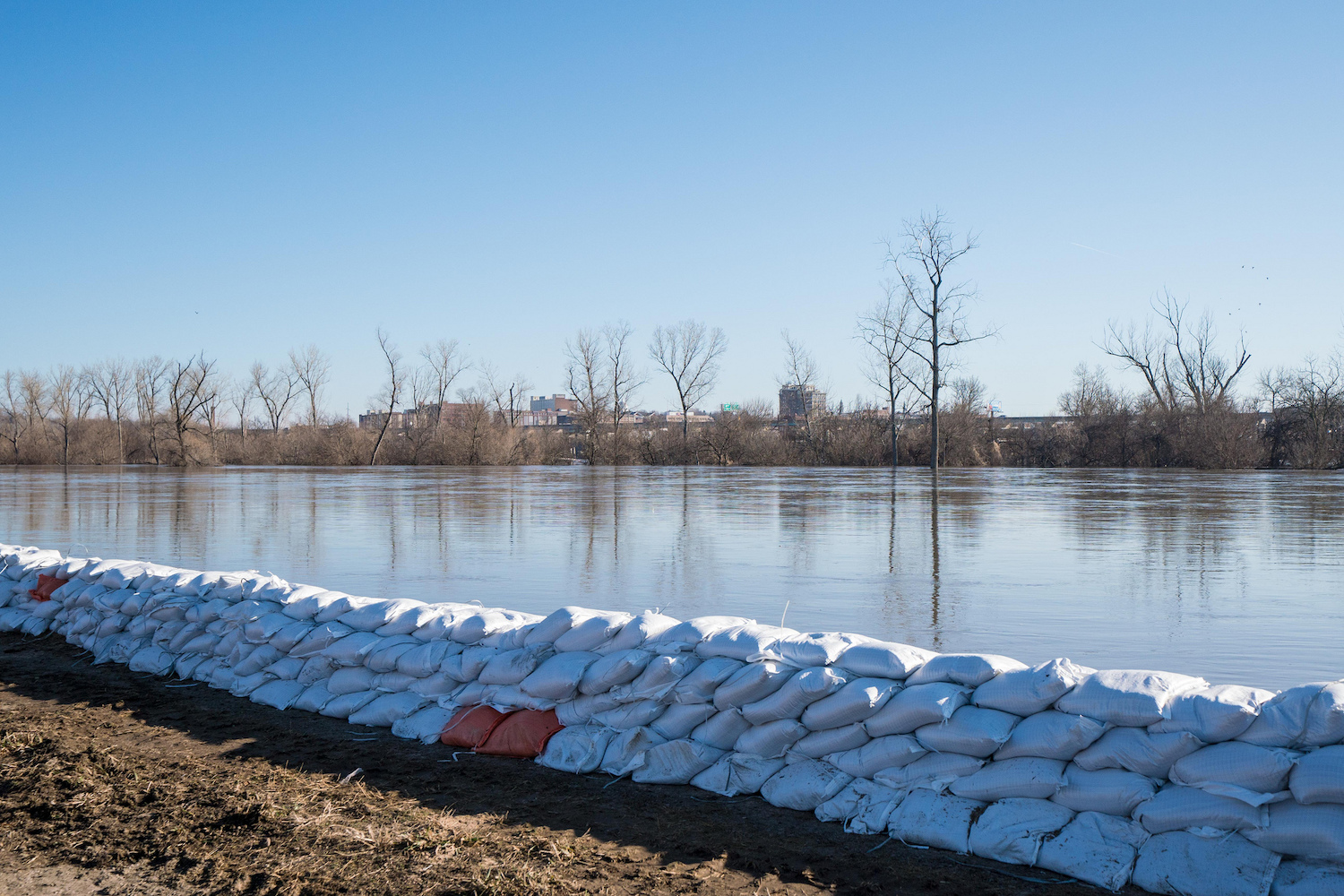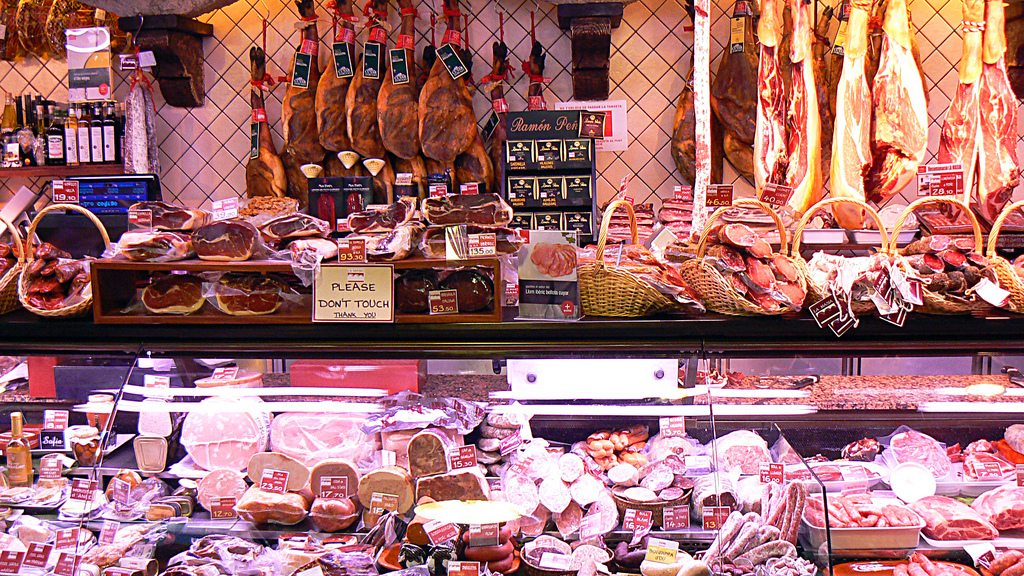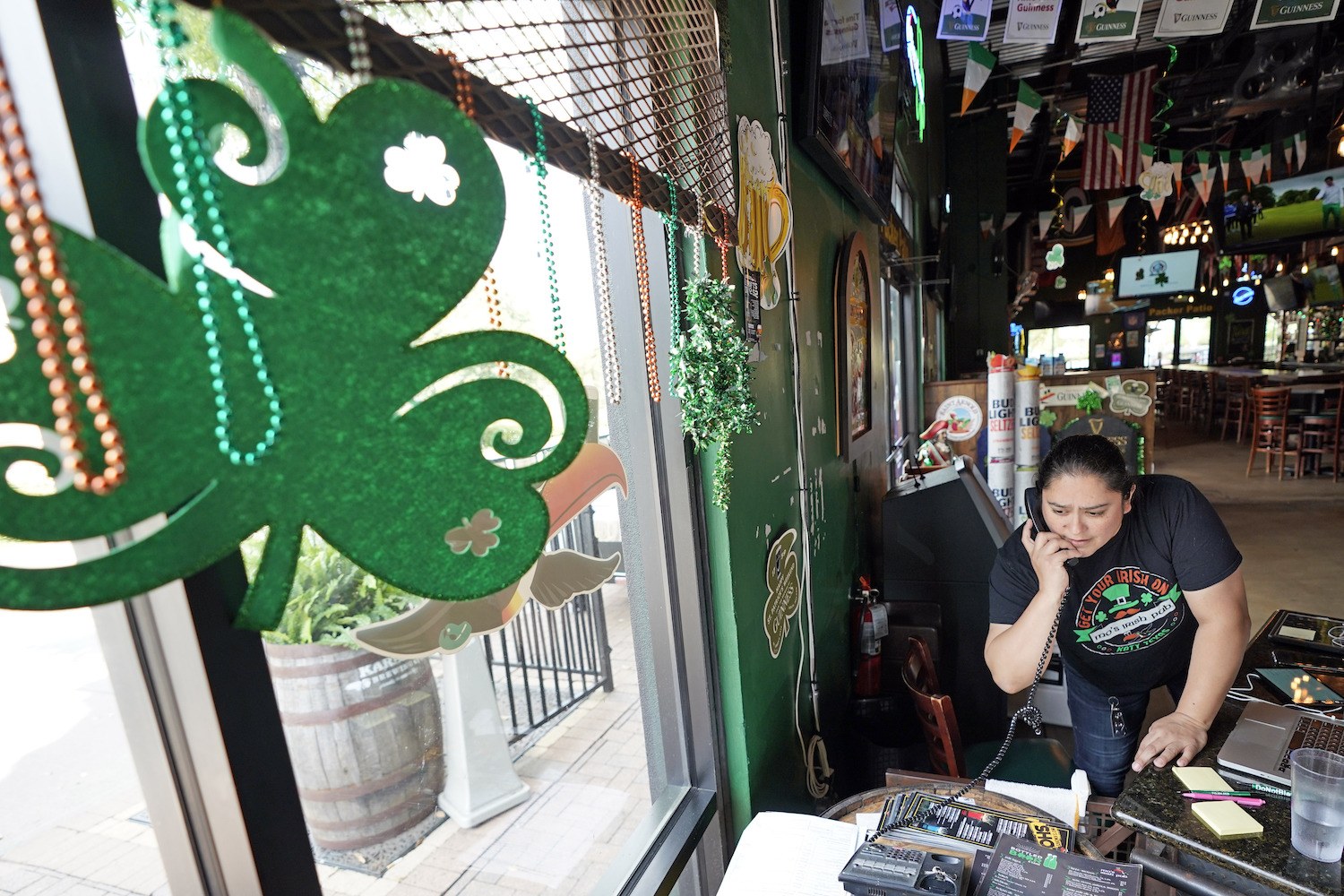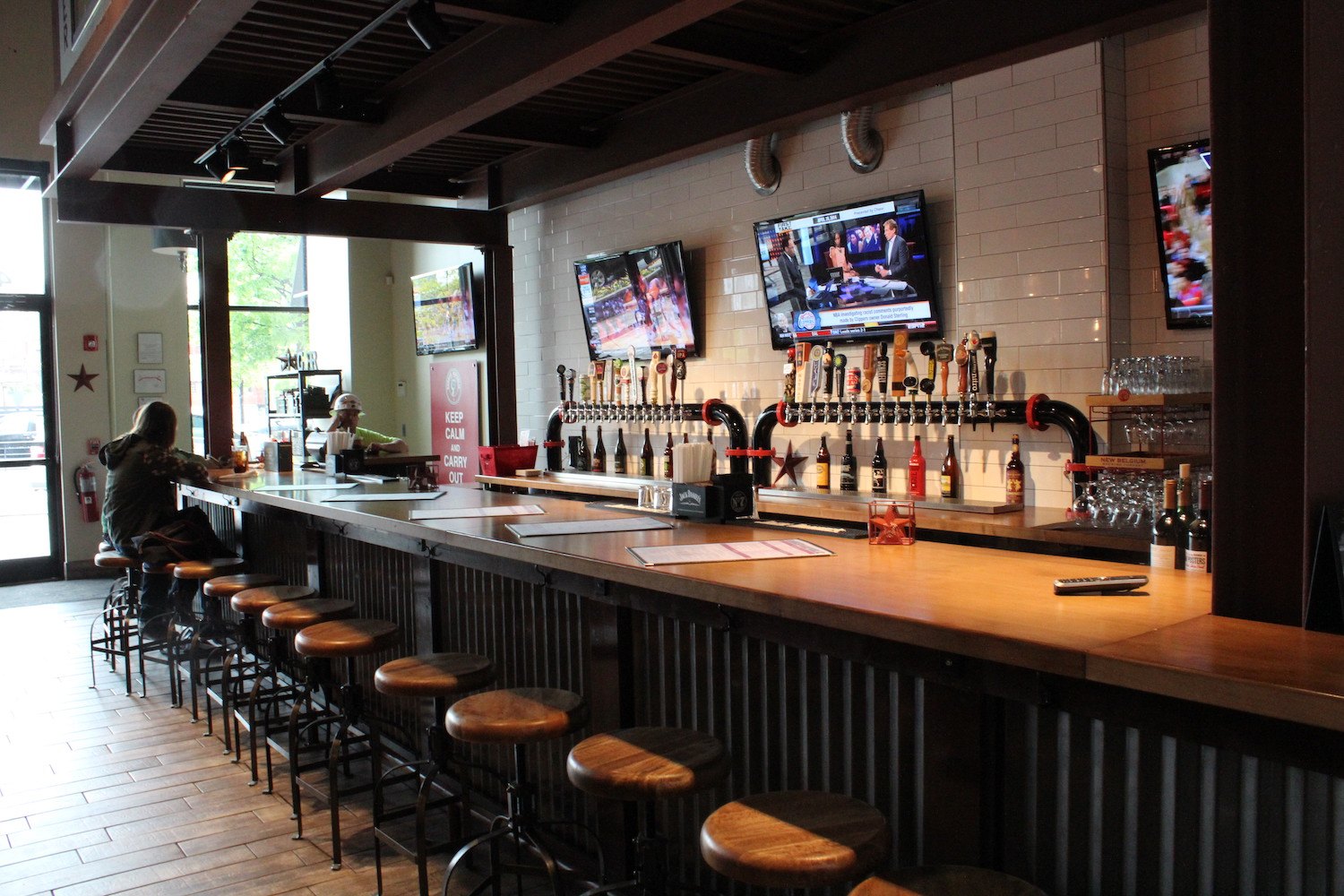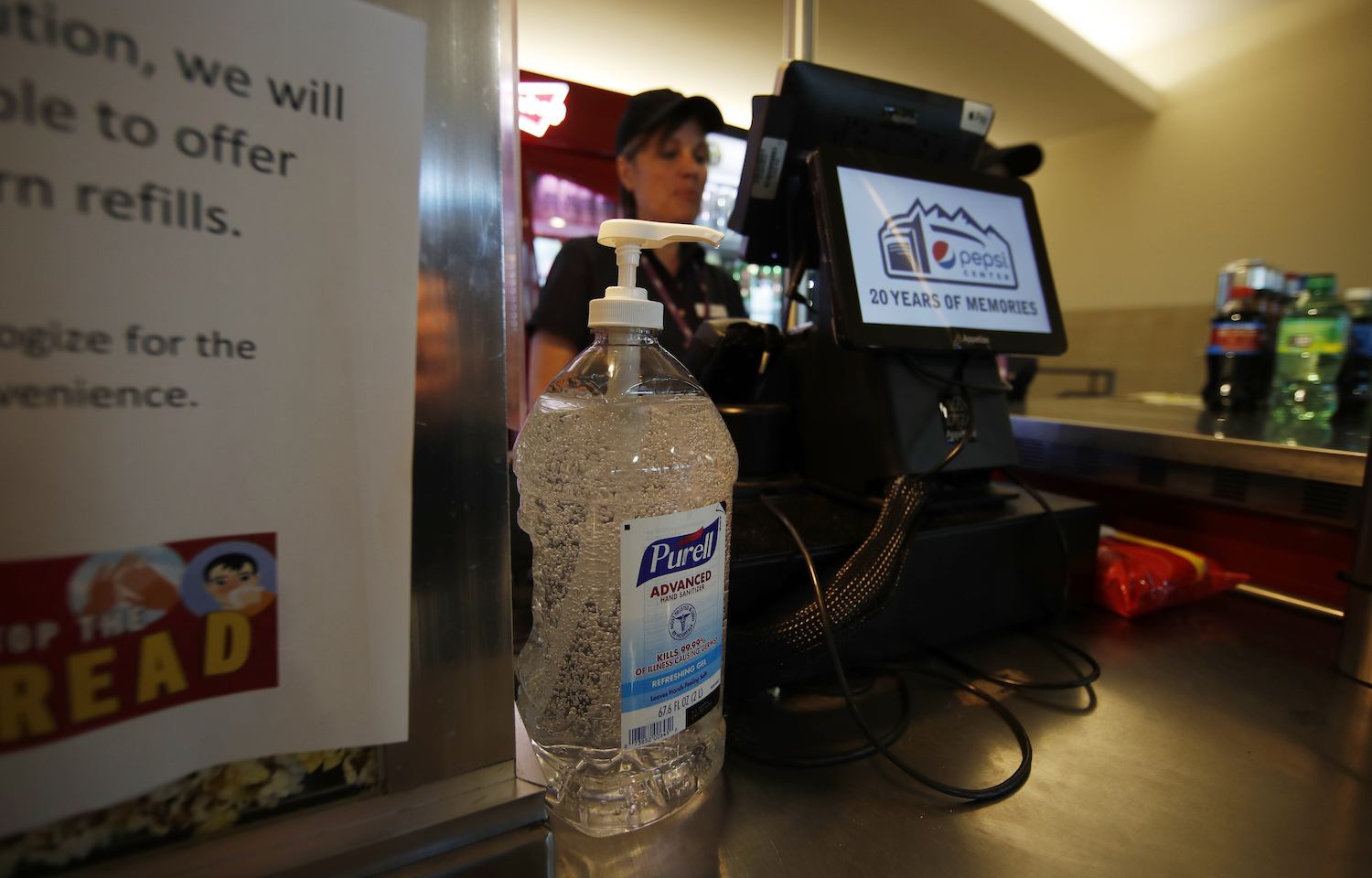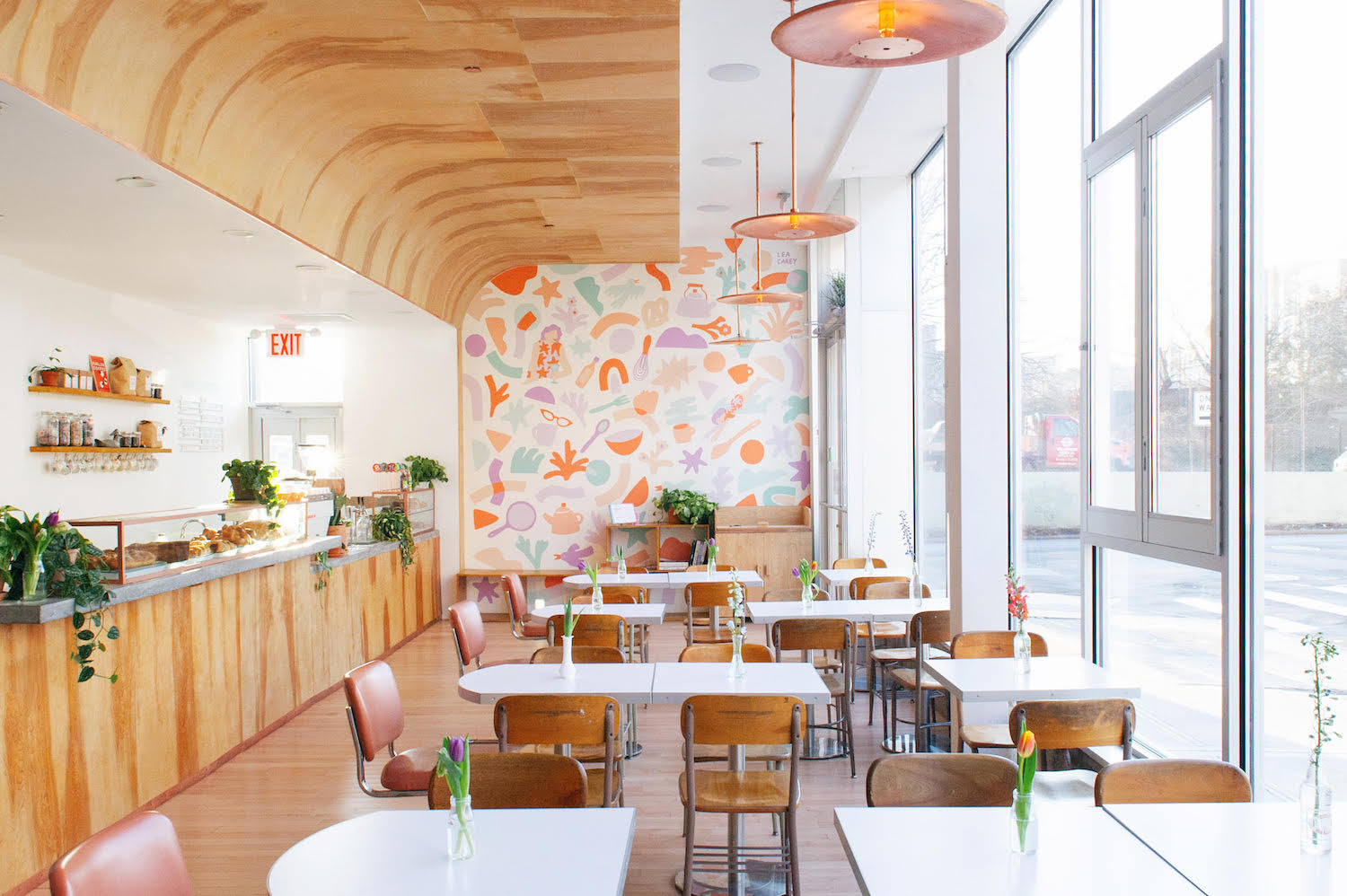
Andrew Fu
A Brooklyn restaurateur walks us through every precaution he’s taking to protect his staff, delivery drivers, and customers, in the time of a pandemic.
As the Covid-19 case count mushrooms in the U.S., restaurant dining rooms are largely empty. To feed loyal customers—and try to make ends meet—some kitchens have turned into delivery operations, but they’ve had to adjust. Here, restaurateur Nate Adler shares his approach at Gertie, an all-day Brooklyn café. They send out rotisserie chickens, breakfast sandwiches, and care packages, without ever opening their doors, doing all delivery and take-out business through a take-out window.
There’s a new normal once the food is delivered, as well. Don Schaffner, extension specialist and professor of food science at Rutgers University, takes us through the best practices.
1.
Gertie gets delivery and online orders on an iPad, or customers can call in. The tablets and phones have been sanitized, but “there are only three of us working,” said Adler, “and we don’t touch a single human being in the process.” He, his partner, and the executive chef wash their hands every five minutes and wear gloves.
2.
The order pops up in the kitchen, the one place that hasn’t changed. “We have an A from the Department of Health,” said Adler, “and we’ve always followed protocol, so it’s no different from any other day.” The chef wears gloves that he changes for each order.
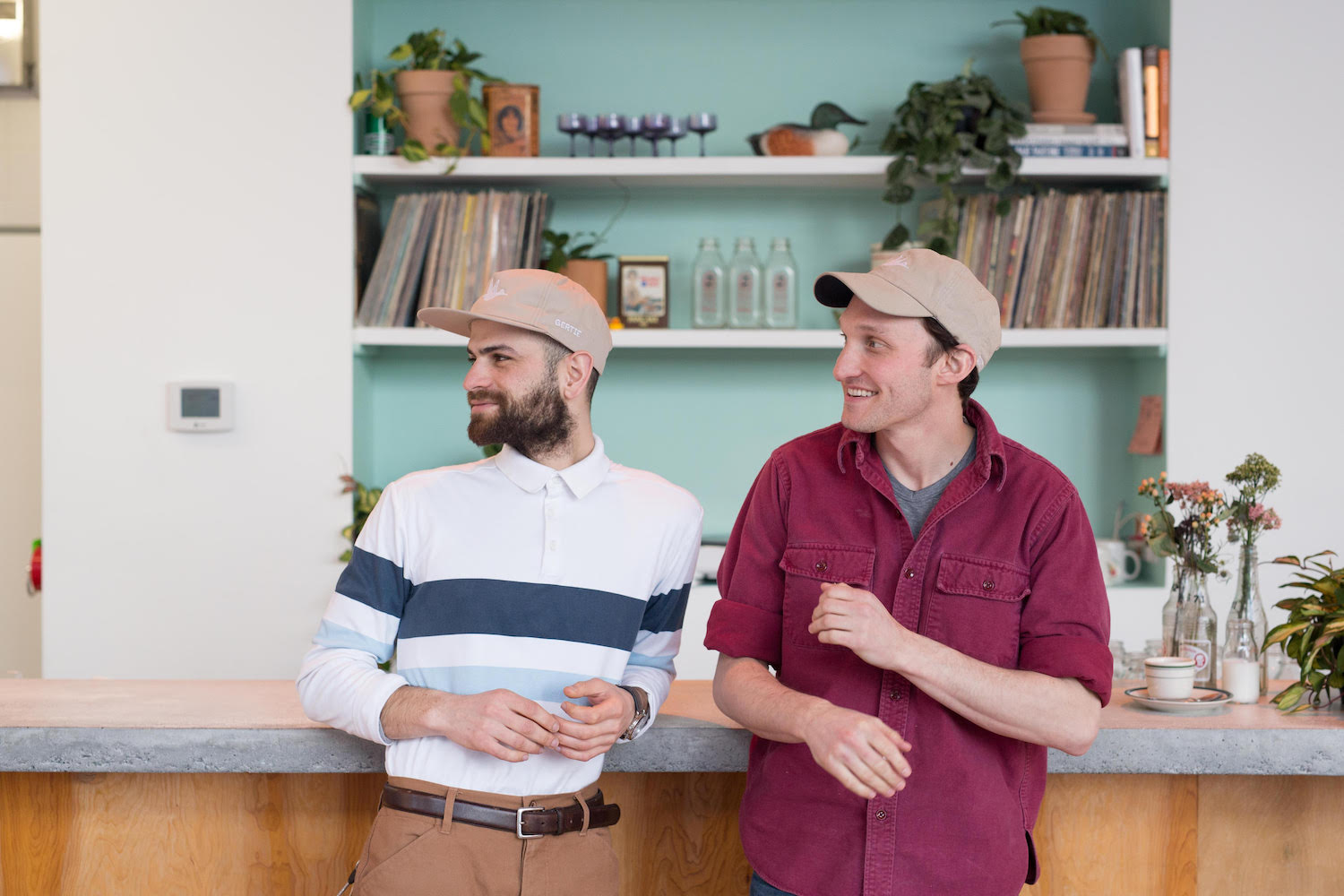
Restaurateur Nate Adler (left) and partner Flip Biddelman (right) of Gertie, the all-day Brooklyn café, are doing business through a take-out window, whether it’s for delivery or pick-up.
Asher Kelly Nacht
3.
The food goes into clamshell containers that go into a handled paper bag. Gertie no longer supplies utensils or napkins for two reasons: people are eating at home, so they have their own supplies, and Adler doesn’t want to risk cross-contamination once the food leaves the restaurant. If a delivery driver sneezes, and is sick, the germs don’t touch anything a customer needs to be able to eat.
4.
Gertie has a take-out window no one used to use—but now it’s the only way the restaurant does business, because no one is allowed inside. There’s a wireless terminal for credit cards—and Clorox wipes so customers can wipe down the screen before they sign.
5.
There’s one point the restaurant can’t control, which is delivery-service practice. Employees may or may not wear gloves–and while most of them do, said Adler, “unless you’re changing the gloves it’s as bad if not worse than not wearing gloves.”
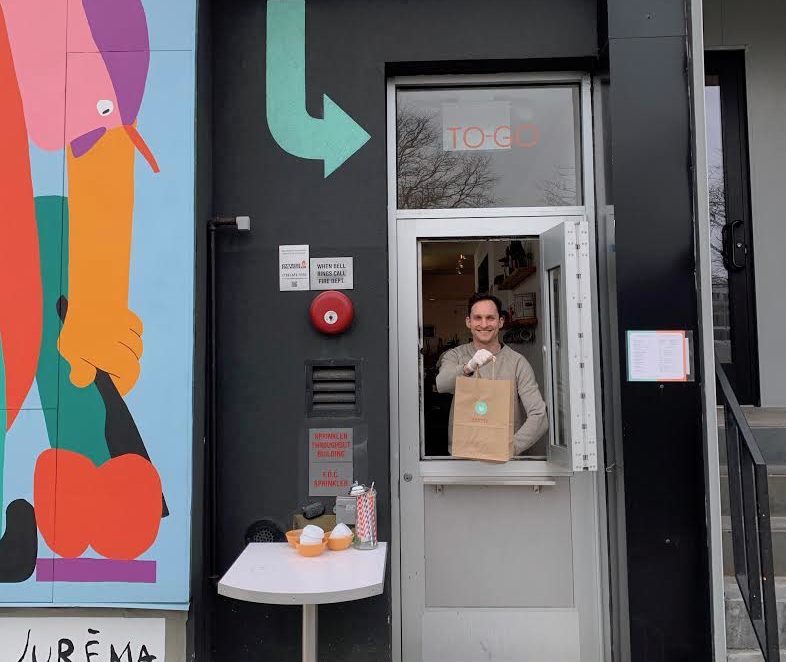
The takeout window at Gertie serves as the perfect conduit for delivery and take-out amidst the covid-19 outbreak.
Nate Adler
6.
The sealed system relies on supplies Gertie currently has on hand. If it’s popular, and the kitchen needs more provisions, Adler will accept deliveries at a rear delivery door, and continue to keep anyone else from entering the building.
7.
The delivery driver drops off the food in a “no-contact” delivery, leaving the food at the door to minimize the risk of transmission from the diner to the driver, or vice versa.
8.
Schaffner, the food safety specialist, emphasizes that the risk of Covid-19 transmission from the take-out bag is low. “You’re not eating that meal in a restaurant next to somebody who has Coronavirus. Good for you for doing that. That is still the overwhelming mechanism where we believe the virus is spread.”
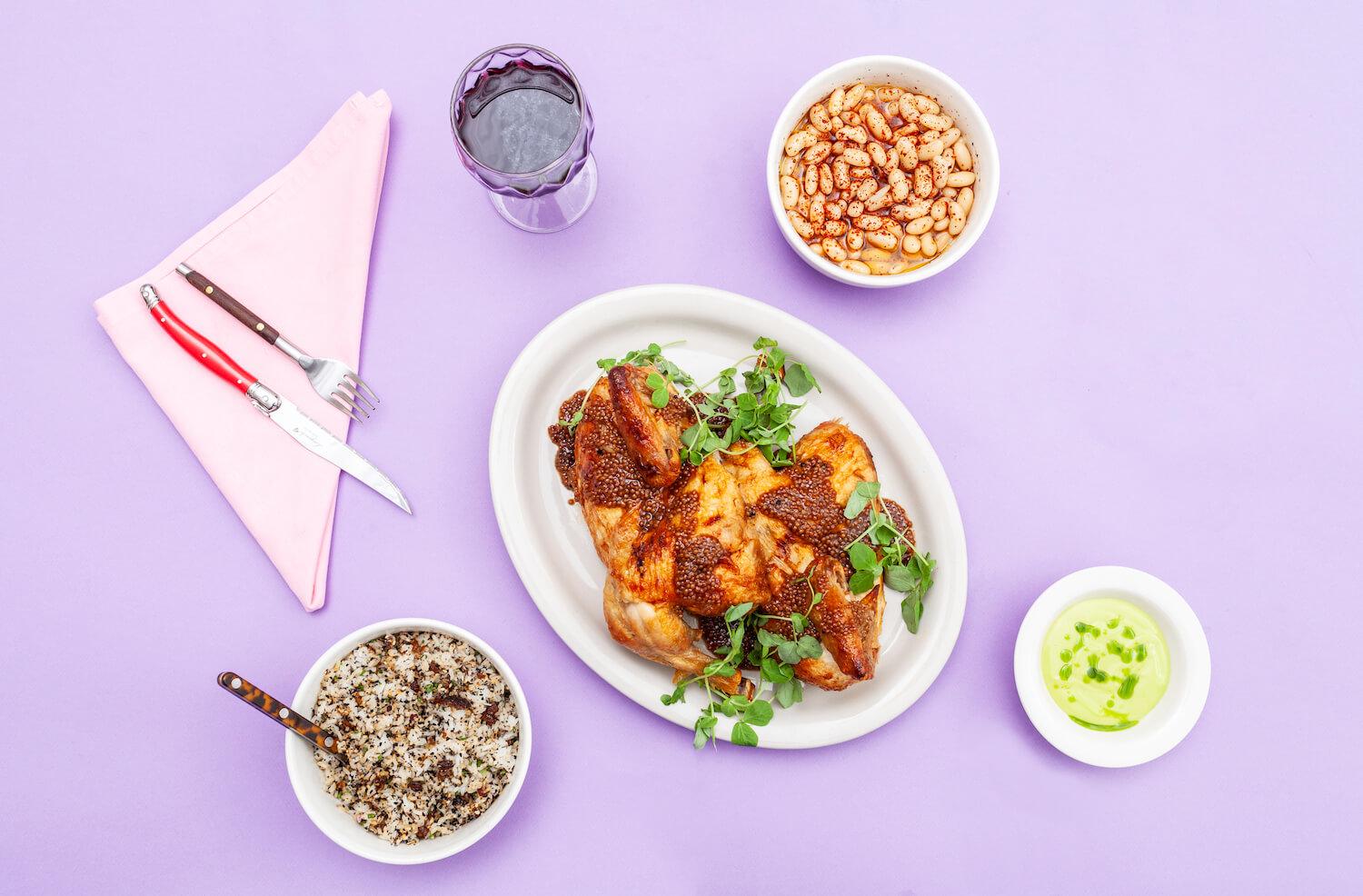
Gertie is sending rotisserie chickens, breakfast sandwiches, and care packages, without ever opening their doors to customers.
Jake Linderman
9.
Still, it never hurts to be cautious. After touching the takeout bag, avoid touching anything but the bottoms of plates or bowls and the handles of serving utensils. Plate the food, ideally all at once, and dispose of the clamshells and the bag. “If you touch that bag and it had coronavirus on it, you’ve probably left most of that coronavirus on the bag,” Schaffner says.
10.
It’s essential to wash your hands between disposing of the bag and setting the table with your own napkins and silverware. If someone in the household has been quarantined or diagnosed with Covid-19, the quarantined person should eat in a separate room. Families should avoid double-dipping, sharing plates, sharing bites of food, or using the same utensils.
11.
After enjoying the meal, all plates and utensils should be washed thoroughly.


